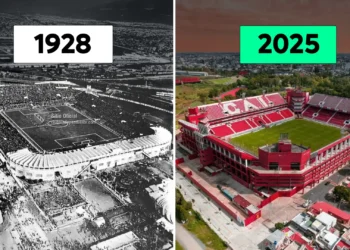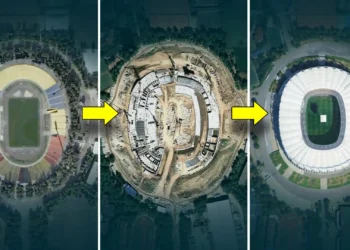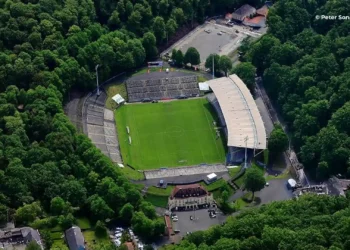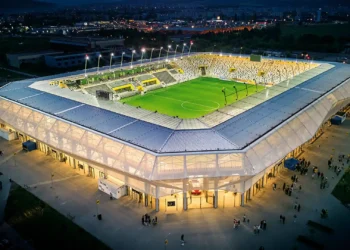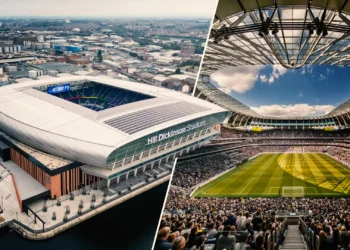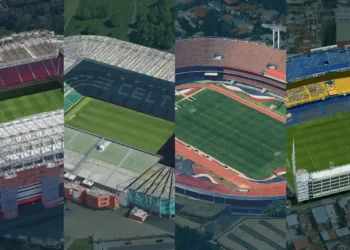In an era when football stadiums are getting bigger, brighter, and more complex, a quiet design revolution is taking place.
A new generation of architects is building simpler, smaller, and smarter stadiums — where every line, light, and material has a purpose.
These minimalist stadiums focus on human experience, proportion, and atmosphere — proving that you don’t need to be massive to be magnificent.
What Makes a Stadium Minimalist?
Minimalism in architecture means removing the unnecessary and perfecting what remains.
In stadium design, that means:
- Clean, geometric shapes
- Limited but refined materials (steel, concrete, glass, wood)
- Natural light and open space
- Seamless fan experience without distractions
- Sustainable construction with local identity
It’s beauty through simplicity — and football is embracing it more than ever.
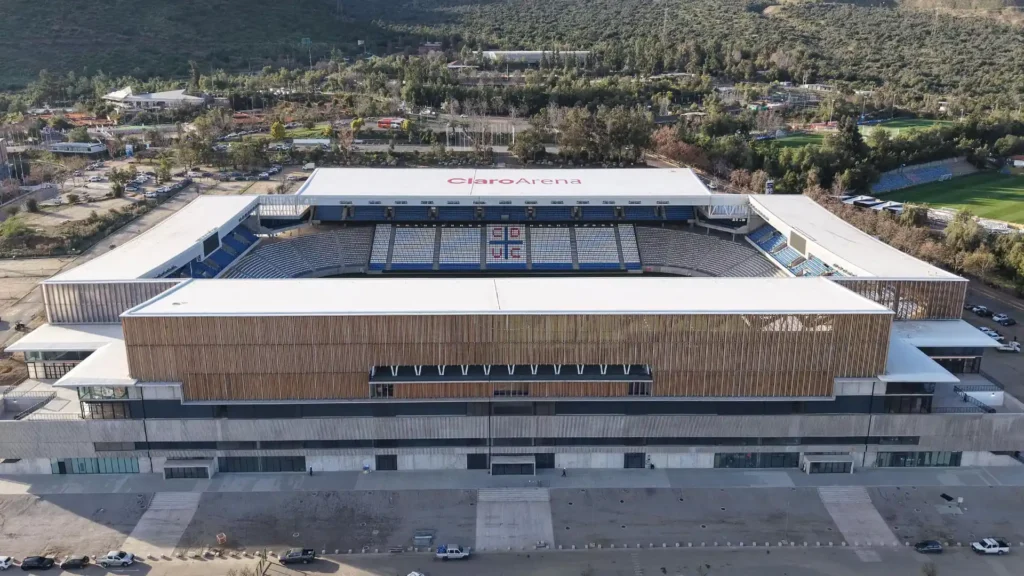
1. Claro Arena – Santiago, Chile
Recently completed, Claro Arena represents the new South American minimalism: a sleek, multifunctional venue designed for both football and concerts.
Its calm grey façade, open corners, and transparent upper structure allow natural light to flood the interior — modern, affordable, and elegant.
A perfect example of doing more with less.
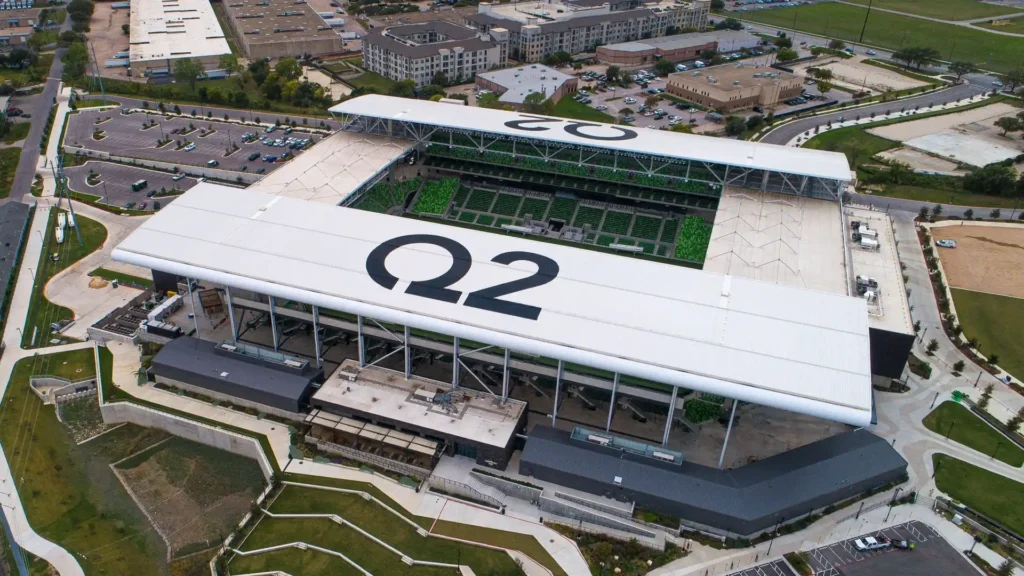
2. Q2 Stadium – Austin, USA
Home of Austin FC, Q2 Stadium is a benchmark for eco-minimalist design.
The roof is light, the lines are sharp, and the color palette — green, black, and wood — blends beautifully with the Texas environment.
With 20,700 seats, it feels intimate but modern, prioritizing comfort and connection over extravagance.
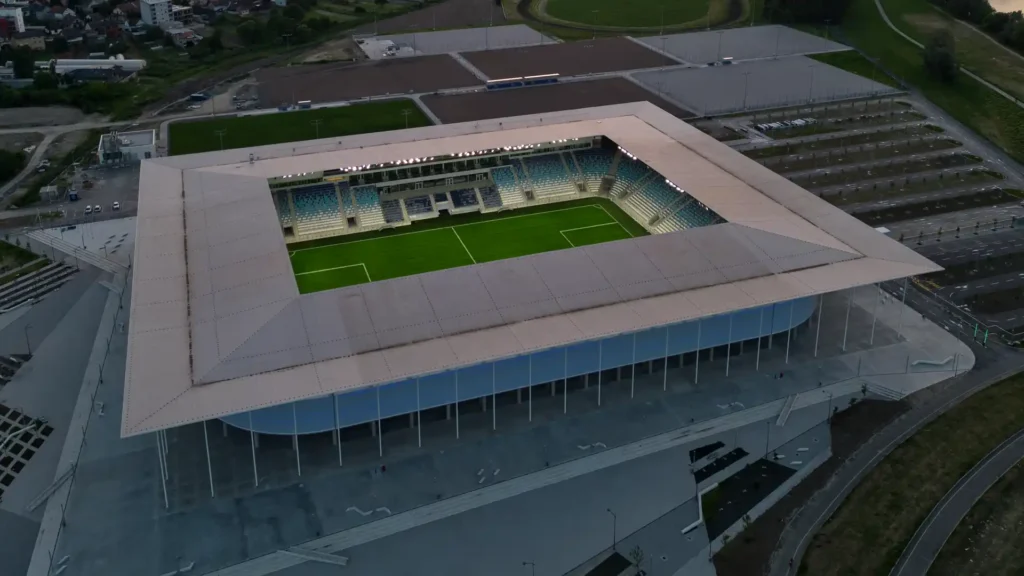
3. Opus Arena – Osijek, Croatia
This brand-new stadium is one of Europe’s best small-scale architectural projects.
Its crisp rectangular shape, dark metal cladding, and glowing edges make it both minimal and futuristic.
With just 13,000 seats, Opus Arena shows that you can achieve world-class aesthetics without a mega-budget.
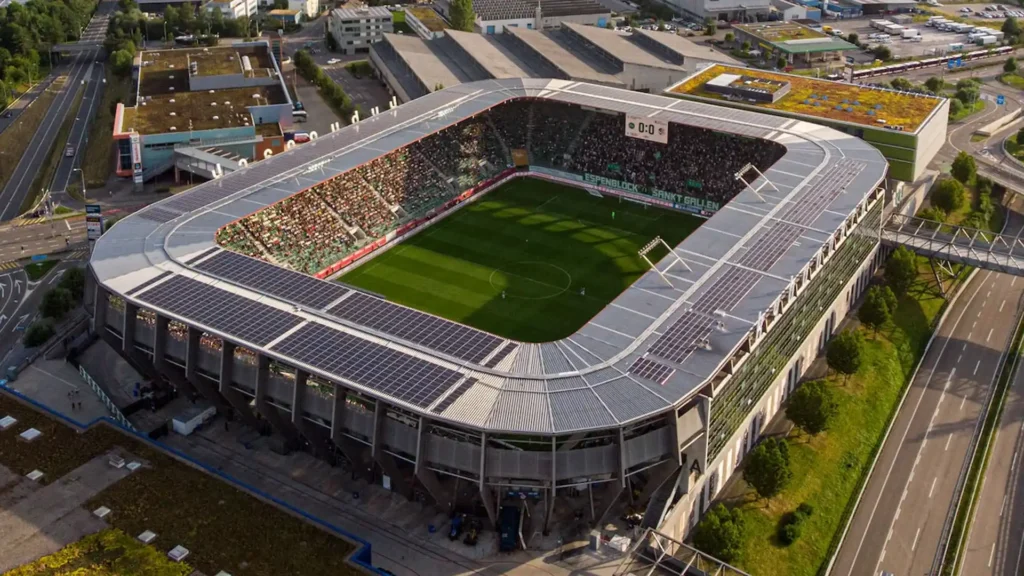
4. Kybunpark – St. Gallen, Switzerland
Set against the backdrop of Swiss mountains, Kybunpark’s design feels natural, calm, and balanced.
Its glass exterior reflects the landscape, while the interior structure is clean and efficient.
No unnecessary decoration — just thoughtful geometry and perfect visibility from every seat.
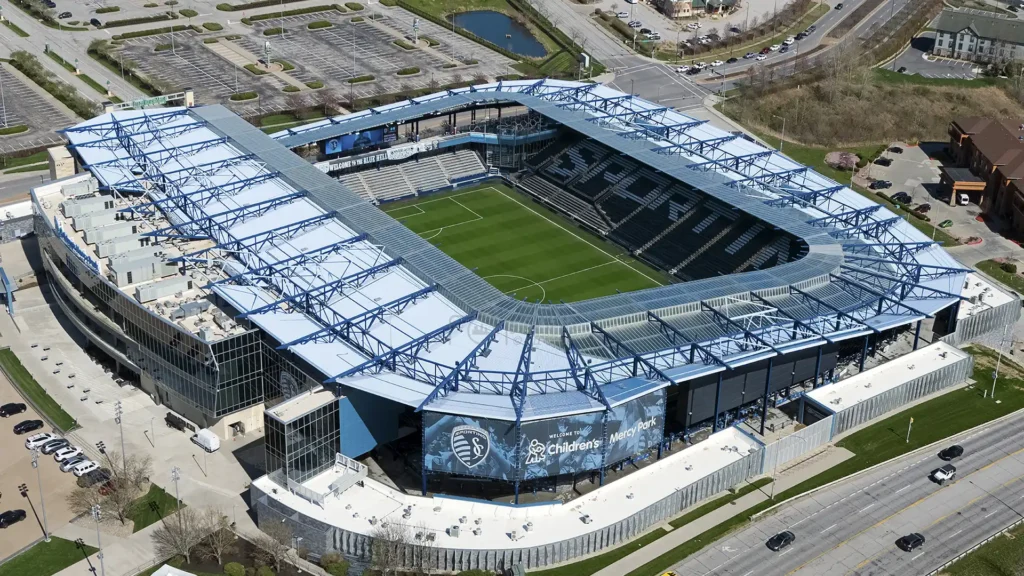
5. Children’s Mercy Park – Kansas City, USA
This compact MLS stadium proves that minimal design can still deliver maximum atmosphere.
The asymmetric roof structure, subtle lighting, and modern façade create a dynamic look without visual clutter.
Inside, everything is about the fan experience — open sightlines, flow, and light.
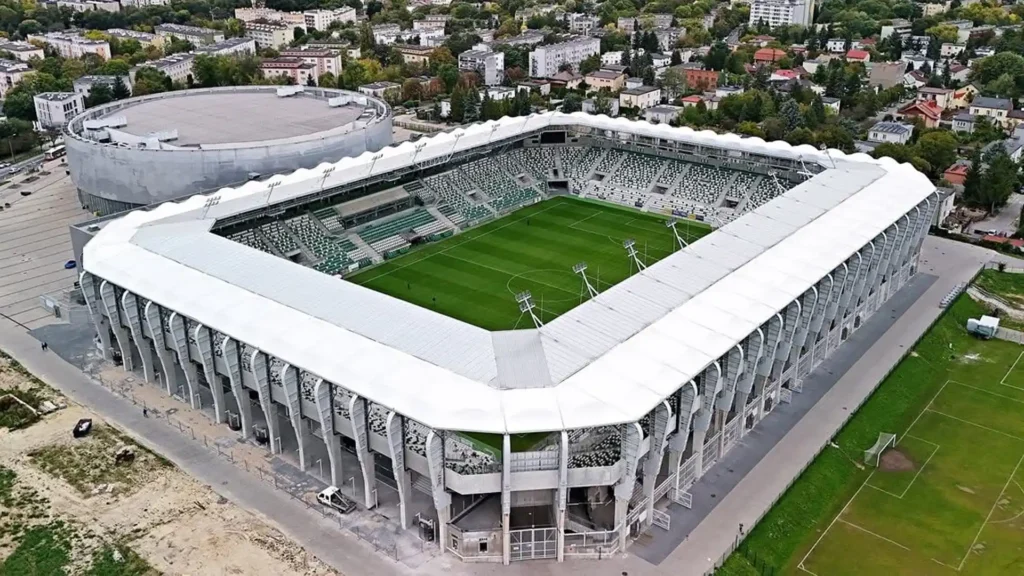
6. RKS Radomiak Radom Stadium – Poland
A clean, functional design that reflects Poland’s growing movement toward efficient sports architecture.
The simple concrete and glass combination gives it a smart, modular aesthetic, adaptable for both football and events.
Its minimal form keeps construction costs low — without sacrificing style.
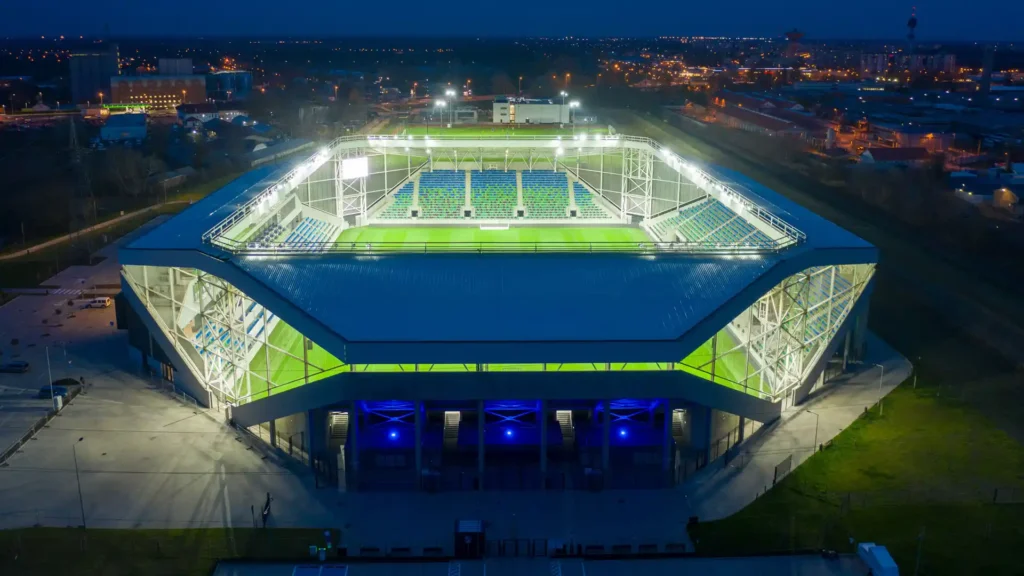
7. Szent Gellért Fórum – Szeged, Hungary
This 8,000-seat gem feels both modern and spiritual.
Its all-white roof structure and precise symmetry give it a cathedral-like calmness, while the minimal lighting design enhances the atmosphere at night.
An architectural example of how purity and proportion can define a stadium.
Why Minimalism Works in Stadium Design
Minimalist stadiums are not just aesthetically pleasing — they are also:
- Cheaper to build and maintain
- More sustainable, using fewer materials
- Adaptable for community and multi-sport use
- Timeless — they age gracefully without trends
As budgets tighten and sustainability rises, minimalism is becoming the future of sports architecture.
A New Kind of Beauty
Minimalist stadiums show that football doesn’t always need fireworks and massive LED walls to inspire emotion.
Their beauty lies in proportion, atmosphere, and detail — not excess.
In a world obsessed with “bigger,” these arenas prove that “less” can truly feel like more.


